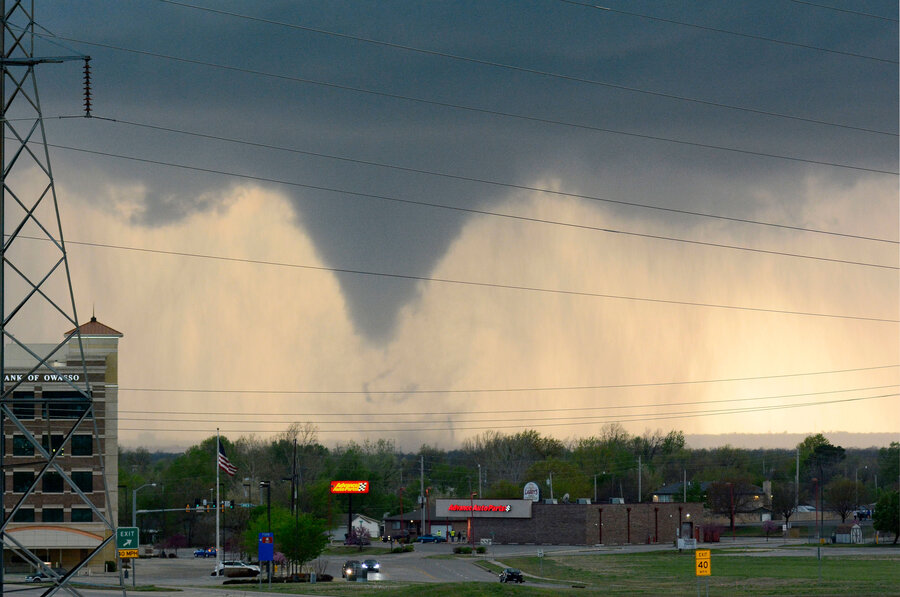Right on schedule, tornadoes touch down in the South
Loading...
Several tornadoes have touched down this week across Alabama, Georgia, Louisiana, and Oklahoma, destroying property and leading to flooding that caused one fatality in Mississippi.
Southern states have been experiencing a full share of unusual and damaging weather the past several months, from record flooding in late December to unseasonable, after-dark tornadoes in February. Tornadoes touching down in the middle of the region's normal tornado season, March through May, offer some indication that weather patterns are returning to a more predictable course after an unusual winter, but they do not suggest that the volatile effects of El Niño, a warm-weather pattern from the Pacific Ocean, are over yet.
Severe tornadoes hit certain regions during any year, but El Niño and other climate activity often changes or worsens the impact.
Research is mixed on how El Niño patterns, which occur when the Pacific is warmer than usual, affect tornadoes, writes Ian Livingston for US Tornadoes. This year's El Niño pattern has not kept entirely to the weather patterns usually seen during an El Niño year, although accurate records on tornadoes are a sufficiently new phenomenon and meteorologists warn against developing too many firm rules on the subject.
The most frequent months for tornado occurrence are June, April, and May (in that order), but no month is completely free of such storms.
"Tornadoes can happen at any time of the year, in any month of the year, and in just about any location in the country," Greg Carbin, a meteorologist with the National Weather Service in Oklahoma, told LiveScience.
The El Niño is a reasonable predictor of the fierce winter storms and flooding the Southeast has experienced this year but it generally brings lighter tornado seasons. The Southeast's worst tornado seasons generally hit during a year when neither warming nor cooling patterns from the Pacific are influencing its weather, according to a 2007 study from the NOAA/NWS Storm Prediction Center, in Norman, Okla.
El Niño patterns typically affect weather in the United States the most during late winter and early spring and can cover the South with storms during the months of December through April, according to the National Weather Service's Jackson, Miss., office. Meteorologists say the 2016 El Niño has illustrated the weather force's unpredictability, perhaps because of climate change, or perhaps because the pattern itself is marked by volatility.
"This is kind of a hybrid El Niño," Jim O’Brien, a meteorologist for the Weather Authority told WTTV during the peak of the unusual February tornadoes. "Storm tracks have set up a bit differently. The cold air has not been placed where we thought it would be placed in some locations."








